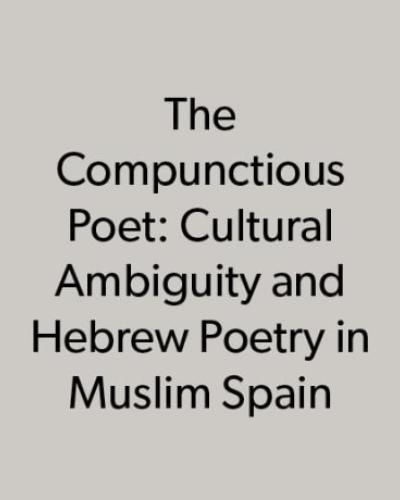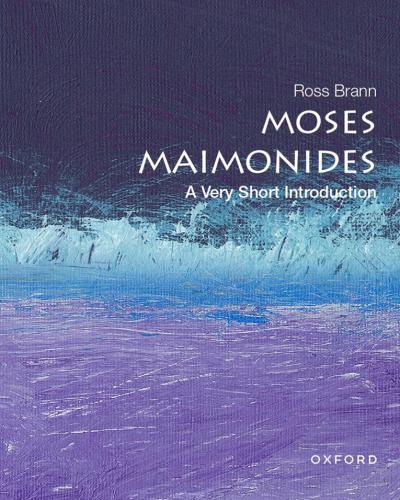Moses Maimonides: A Very Short Introduction
Moses Maimonides, a scientist, physician, philosopher, rabbinic scholar, and communal leader, was perhaps the most imposing Jewish figure of the pre-modern age. Yet, more than eight centuries after his death, the meaning of his life and his work remains contested.
This "Very Short Introduction" to Moses Maimonides surveys Maimonides' many intellectual, literary, and professional ventures. Born in Islamic Cordoba, he ultimately settled in Cairo, where he served as jurist and civic leader and a highly esteemed physician with responsibilities at the Fatimid and Ayyubid courts, even as he deepened his philosophical-theological pursuits. He moved seamlessly between specialized, private, and public Jewish and Muslim spheres.
Indeed, his written works traverse multiple disciplines, employ several literary genres, and address various elite and popular audiences. Beginning with his Commentary on the Mishnah and culminating in the seminal "Mishneh Torah (Code of Jewish Law)," Maimonides reorganized and systematized all of rabbinic law. He regarded the attainment of wisdom as the ultimate goal of human life. Like many Jewish and Muslim religious intellectuals of the period Maimonides was preoccupied with the problem posed by the language religious tradition deploys in referring to God. His "Guide for the Perplexed" treats this central challenge to knowing God's absolute, unchanging unity, as well as defining the purpose of divine law and supposed interruption of the natural order in the form of prophecy and miracles.
This book organizes Maimonides' thinking and writings thematically and puts his works into dialogue with one another. It proposes that the key to engaging Maimonides on his own terms is to understand he applied a rationalist's regimen characteristic of his scientific research and practice of medicine to all of his life's work: he observed and studied a problem, diagnosed it, and then prescribed a remedy for it whether the concern was physical, metaphysical, spiritual, intellectual, or social in nature.
His Arabic and Hebrew contributions to each of his fields of inquiry were translated and disseminated far and wide and found a prominent place among religious and scientific intellectuals in the Latin West and throughout the Jewish and Islamic worlds.
Racial Blackness and Indian Ocean Slavery
From the East African and Red Sea coasts to the Persian Gulf ports of Bushihr, Kish, and Hurmuz, sailing and caravan networks supplied Iran and the surrounding regions with African slave labor from antiquity to the nineteenth century. This book reveals how Iranian cinema preserves the legacy of this vast and yet long-overlooked history that has come to be known as Indian Ocean slavery.
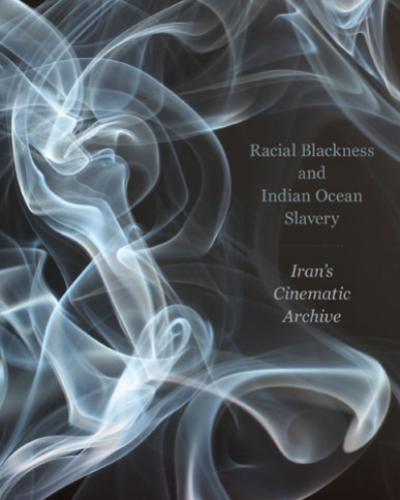
'Arabiyyat al-Naas (Part Two) An Intermediate Course in Arabic 2nd edition
Arabiyyat al Naas (Part Two): An Intermediate Course in Arabic, second edition, offers a vibrant course in Arabic as it is written and spoken today by educated native speakers.
It is a theme-based textbook delivered in the form of a serialized radio drama. Through the lens of journalism and personal interactions modelled by the main characters of this radio drama, learners are equipped to continue developing their spoken and written Arabic skills in the context of authentic dialogues and reading texts. As such, this book reflects cross-dialectal communication as used by native speakers across the Arab world.
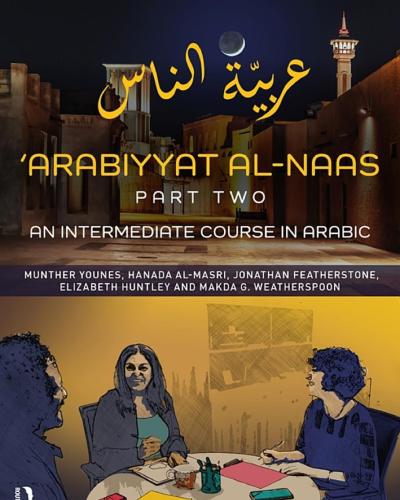
'Arabiyyat al-Naas (Part One) An Introductory Course in Arabic
‘Arabiyyat al-Naas (Part One), second edition, offers a groundbreaking introduction to Arabic as it is written and spoken by native speakers. It combines a grounding in Modern Standard Arabic (MSA) with an innovative integration of the spoken Levantine variety used in Syria, Lebanon, Jordan and Palestine.
The course efficiently prepares students for the practical realities of learning and “living” Arabic today. The book contains 29 theme-based units covering all the core topics expected in a first-year Arabic course, such as countries, clothes, colors, family and professions. The book is to be used in conjunction with the companion website (www.routledge.com/cw/younes) offering a wealth of additional instructor and student resources.
This volume is the first in an exciting three-part series of Arabic textbooks which together provide a complete three-year undergraduate language program.
The book is an essential resource for students beginning to learn Arabic. While primarily designed for classroom use, it is also highly suitable for independent study. The materials are designed to bring students from the novice low level to the intermediate low level on the ACTFL scale, and from A1 to A2/B1 on the CEFR scale.
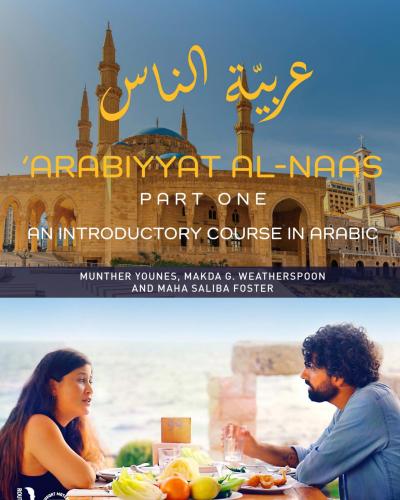
Unknowing and the Everyday: Sufism and Knowledge in Iran
In "Unknowing and the Everyday" Seema Golestaneh examines how Sufi mystical experience in Iran shapes contemporary life. Central to this process is ma’rifat, or “unknowing”—the idea that, as it is ultimately impossible to fully understand the divine, humanity must operate from an engaged awareness that it knows nothing. Golestaneh shows that rather than considering ma’rifat an obstacle to intellectual engagement, Sufis embrace that there will always be that which they do not know. From this position, they affirm both the limits of human knowledge and the mysteries of the profane world. Through ethnographic case studies, Golestaneh traces the affective and sensory dimensions of ma’rifat in contexts such as the creation of collective Sufi spaces, the interpretation of Persian poetry, formulations of selfhood and non-selfhood, and the navigation of the socio-material realm. By outlining the relationship between ma’rifat and religious, aesthetic, and social life in Iran, Golestaneh demonstrates that for Sufis the outer bounds of human thought are the beginning rather than the limit.
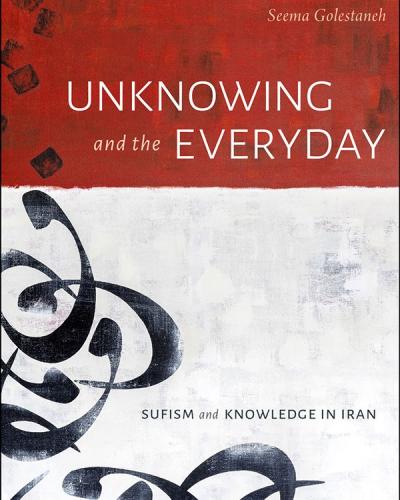
Medicine in the Talmud: Natural and Supernatural Remedies between Magic and Science
Despite the Talmud being the richest repository of medical remedies in ancient Judaism, this important strain of Jewish thought has been largely ignored—even as the study of ancient medicine has exploded in recent years. In a comprehensive study of this topic, Jason Sion Mokhtarian recuperates this obscure genre of Talmudic text, which has been marginalized in the Jewish tradition since the Middle Ages, to reveal the unexpected depth of the rabbis’ medical knowledge. Medicine in the Talmud argues that these therapies represent a form of rabbinic scientific rationality that relied on human observation and the use of nature while downplaying the role of God and the Torah in health and illness. Drawing from a wide range of both Jewish and Sasanian sources—from the Bible, the Talmud, and Maimonides to texts written in Akkadian, Syriac, and Mandaic, as well as the incantation bowls—Mokhtarian offers rare insight into how the rabbis of late antique Babylonia adapted the medical knowledge of their time to address the needs of their community. In the process, he narrates an untold chapter in the history of ancient medicine.
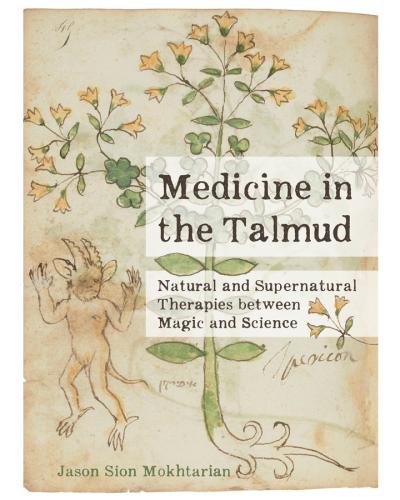
Sonorous Desert
For the hermits and communal monks of antiquity, the desert was a place to flee the cacophony of ordinary life in order to hear and contemplate the voice of God. But these monks discovered something surprising in their harsh desert surroundings: far from empty and silent, the desert is richly reverberant. "Sonorous Desert" shares the stories and sayings of these ancient spiritual seekers, tracing how the ambient sounds of wind, thunder, water, and animals shaped the emergence and development of early Christian monasticism.
Kim Haines-Eitzen draws on ancient monastic texts from Egypt, Sinai, and Palestine to explore how noise offered desert monks an opportunity to cultivate inner quietude, and shows how the desert quests of ancient monastics offer profound lessons for us about what it means to search for silence. Drawing on her own experiences making field recordings in the deserts of North America and Israel, she reveals how mountains, canyons, caves, rocky escarpments, and lush oases are deeply resonant places. Haines-Eitzen discusses how the desert is a place of paradoxes, both silent and noisy, pulling us toward contemplative isolation yet giving rise to vibrant collectives of fellow seekers.
Accompanied by Haines-Eitzen’s evocative audio recordings of desert environments, "Sonorous Desert" reveals how desert sounds taught ancient monks about solitude, silence, and the life of community, and how they can help us understand ourselves if we slow down and listen.
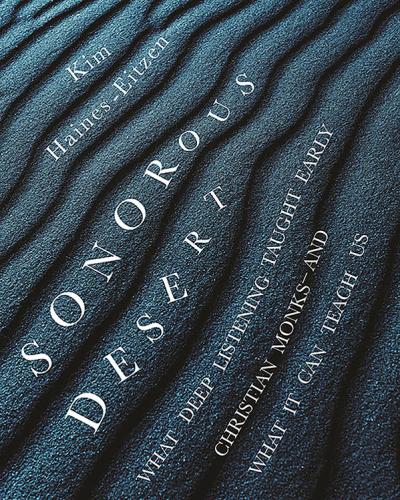
Riḥla ilā Bilād al-‘Arab: A Comprehensive Introductory Course for Arabic Heritage Speakers
"Riḥla ilā Bilād al-‘Arab" starts with the Arabic alphabet and gradually and systematically builds the reading and writing skills and mastery of Fuṣḥā grammar. As students develop their reading, writing, and grammar skills, they will be learning about Arab history, society, and culture. This book contextualizes Arabic grammar teaching with sufficient and relevant drills and exercises. Added personal and cultural interest is given by the diary of Amal, an American student of Arab descent, who travels to Jordan and Palestine.
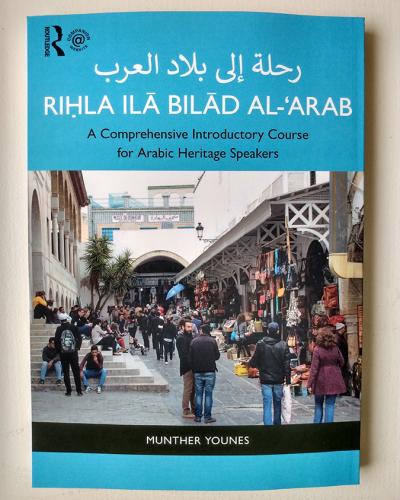
Kalila Wa Dimna: for Students of Arabic Second Edition
Specifically designed for students of Arabic, this fully illustrated rendition of the Arabic literary classic enhances students’ reading, listening, speaking, and writing skills through the medium of these fun, engaging, and culturally relevant tales.
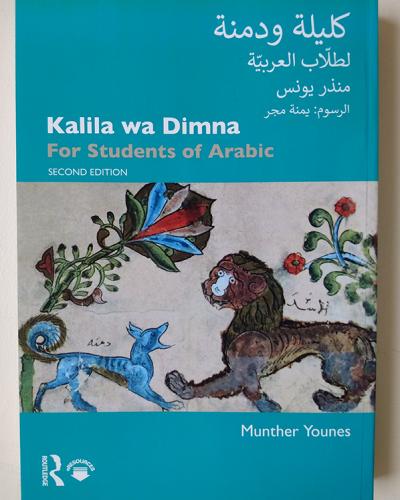
Iberian Moorings: Al-Andalus, Sefarad, and the Tropes of Exceptionalism
March 2021, University of Pennsylvania Press
“Iberian Moorings constitutes an original and compelling contribution to several disciplines that have woefully divided scholarship on Islamic al-Andalus from that of Hebrew Sefarad, and both from the bulk of scholarship on Christian Spain and western Europe. The study is the first of which I am aware to offer a full, diachronic and multivalenced investigation of the long-nurtured belief of Andalusi Muslim and Jewish elites in their cultural superiority and uniqueness, and the afterlife of that belief into our own times.”-Susan Einbinder, University of Connecticut
To Christians the Iberian Peninsula was Hispania, to Muslims al-Andalus, and to Jews Sefarad. As much as these were all names given to the same real place, the names also constituted ideas, and like all ideas, they have histories of their own. To some, al-Andalus and Sefarad were the subjects of conventional expressions of attachment to and pride in homeland of the universal sort displayed in other Islamic lands and Jewish communities; but other Muslim and Jewish political, literary, and religious actors variously developed the notion that al-Andalus or Sefarad, its inhabitants, and their culture were exceptional and destined to play a central role in the history of their peoples.
In Iberian Moorings Ross Brann traces how al-Andalus and Sefarad were invested with special political, cultural, and historical significance across the Middle Ages. This is the first work to analyze the tropes of Andalusi and Sefardi exceptionalism in comparative perspective. Brann focuses on the social power of these tropes in Andalusi Islamic and Sefardi Jewish cultures from the tenth through the twelfth century and reflects on their enduring influence and its expressions in scholarship, literature, and film down to the present day.
Ross Brann is Milton R. Konvitz Professor of Judeo-Islamic Studies, Cornell University. He is author of The Compunctious Poet: Cultural Ambiguity and Hebrew Poetry in Muslim Spain and Power in the Portrayal: Representations of Muslims and Jews in Islamic Spain.
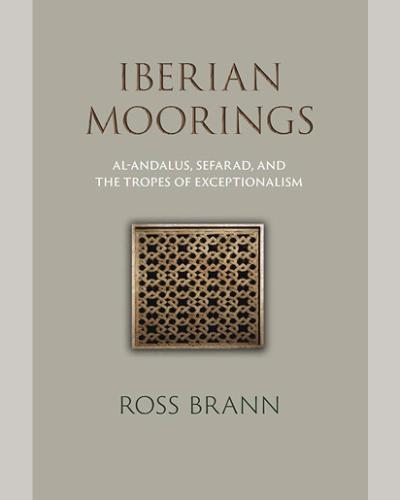
Street Sounds: Listening to Every Day Life in Modern Egypt
Interweaving infrastructural, cultural, and social history, Fahmy analyzes the sounds of modernity, using sounded sources as an analytical tool for examining the past. Street Sounds also reveals a political dimension of noise by demonstrating how the growing middle classes used sound to distinguish themselves from the Egyptian masses. This book contextualizes sound, layering historical analysis with a sensory dimension, bringing us closer to the Egyptian streets as lived and embodied by everyday people.
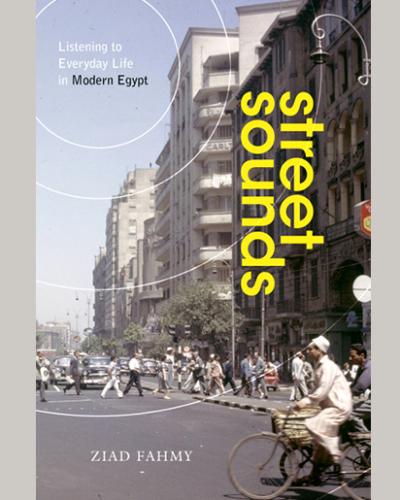
Togo Mizrahi and the Making of Egyptian Cinema
In this book, Deborah A. Starr recuperates the work of Togo Mizrahi, a pioneer of Egyptian cinema. Mizrahi, an Egyptian Jew with Italian nationality, established himself as a prolific director of popular comedies and musicals in the 1930s and 1940s. As a studio owner and producer, Mizrahi promoted the idea that developing a local cinema industry was a project of national importance. Togo Mizrahi and the Making of Egyptian Cinema integrates film analysis with film history to tease out the cultural and political implications of Mizrahi’s work. His movies, Starr argues, subvert dominant notions of race, gender, and nationality through their playful—and queer—use of masquerade and mistaken identity. Taken together, Mizrahi’s films offer a hopeful vision of a pluralist Egypt. By reevaluating Mizrahi’s contributions to Egyptian culture, Starr challenges readers to reconsider the debates over who is Egyptian and what constitutes national cinema.
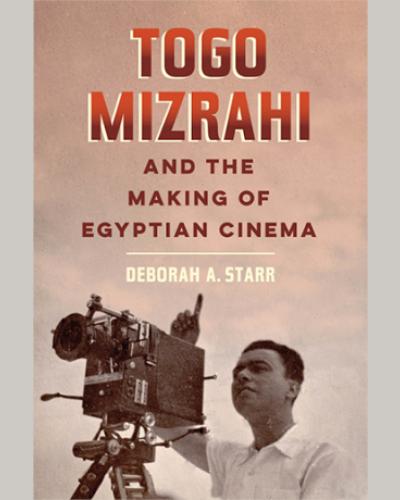
Yeshiva Days
New York City’s Lower East Side has witnessed a severe decline in its Jewish population in recent decades, yet every morning in the big room of the city’s oldest yeshiva, students still gather to study the Talmud beneath the great arched windows facing out onto East Broadway. Yeshiva Days is Jonathan Boyarin’s uniquely personal account of the year he spent as both student and observer at Mesivtha Tifereth Jerusalem, and a poignant chronicle of a side of Jewish life that outsiders rarely see.
Boyarin explores the yeshiva’s relationship with the neighborhood, the city, and Jewish and American culture more broadly, and brings vividly to life its routines, rituals, and rhythms. He describes the compelling and often colorful personalities he encounters each day, and introduces readers to the Rosh Yeshiva, or Rebbi, the moral and intellectual head of the yeshiva. Boyarin reflects on the tantalizing meanings of “study for its own sake” in the intellectually vibrant world of traditional rabbinic learning, and records his fellow students’ responses to his negotiation of the daily complexities of yeshiva life while he also conducts anthropological fieldwork.
A richly mature work by a writer of uncommon insight, wit, and honesty, Yeshiva Days is the story of a place on the Lower East Side with its own distinctive heritage and character, a meditation on the enduring power of Jewish tradition and learning, and a record of a different way of engaging with time and otherness.
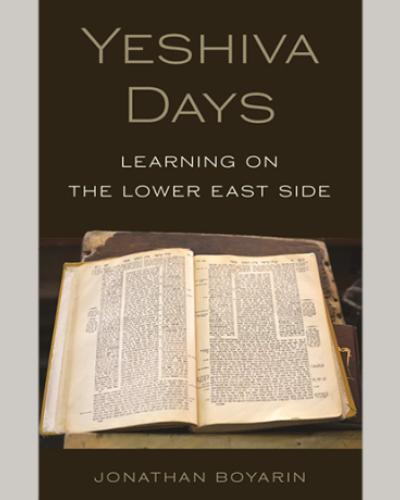
Modern Persian Elementary Level: Like a Nightingale
Modern Persian is a cutting-edge textbook of Persian language intended for two consecutive semesters of elementary-level Persian. The textbook implements the most recent trends in language instruction by emphasizing the basic tenets of flipped learning and practicing the communicative language teaching methodology with a student-centric approach to language instruction. Complete with a companion website, over 300 audio and video presentations, answer key, a searchable audio dictionary, and a special appendix for instructors with classroom activity materials for the entire year, this textbook makes for an innovative, integrated and culturally engaging way for beginners to acquire functional proficiency in colloquial and written Persian
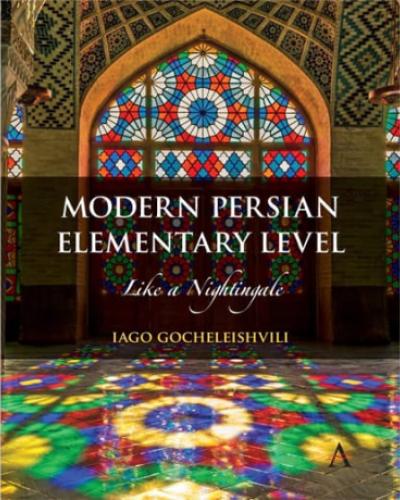
Arabiyyat al-Naas fii MaSr (Part One): An Introductory Course in Arabic
It combines a progressive and rigorous grounding in Modern Standard Arabic (MSA), the register employed for reading, writing and formal speaking, with an innovative integration of the dominant Egyptian variety. Introducing the two simultaneously and seamlessly building on their shared features, ‘Arabiyyat al-Naas fii MaSr (Part One) uses each in its proper context: Egyptian dialect for conversations and MSA for reading and writing activities. In this way, the course efficiently prepares students for the practical realities of learning and living Arabic today.
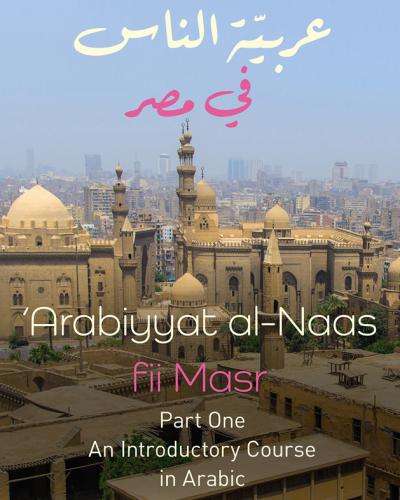
The Nesbit Tablets
In 1914, William M. Nesbit published his dissertation at Columbia University on 30 archival texts from the Third Dynasty of Ur. Now, more than a century later, the remaining tablets in his collection have been recovered and, thanks to the generosity of the Nesbit family, were made available for publication by David I. Owen. The majority of texts published here is from Puzriš-Dagan (Drehem) with some from Nippur and Umma. They originate from the earliest clandestine finds at those sites. The 98 texts, including a re-edition of the previously published tablets, are provided with a catalogue, hand-copies, selected photographs, along with transliterations, translations and comments, thus providing an important addition to the extensive corpus of Ur III texts from this important period in Mesopotamian history.
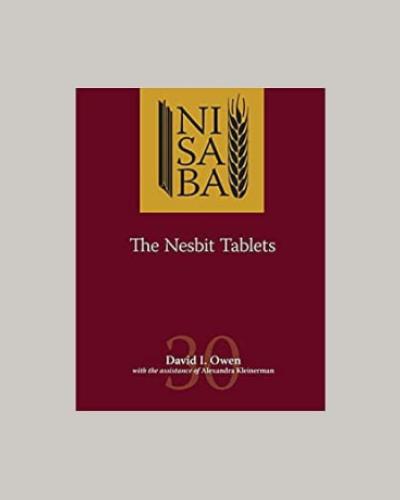
Imperial Matter: Ancient Persia and the Archaeology of Empires
What is the role of the material world in shaping the tensions and paradoxes of imperial sovereignty? Scholars have long shone light on the complex processes of conquest, extraction, and colonialism under imperial rule. But imperialism has usually been cast as an exclusively human drama, one in which the world of matter does not play an active role. Lori Khatchadourian argues instead that things—from everyday objects to monumental buildings—profoundly shape social and political life under empire. Based on the archaeology of ancient Persia and the South Caucasus, Imperial Matter advances powerful new analytical approaches to the study of imperialism writ large and should be read by scholars of empire across the humanities and social sciences.
University of California Press.
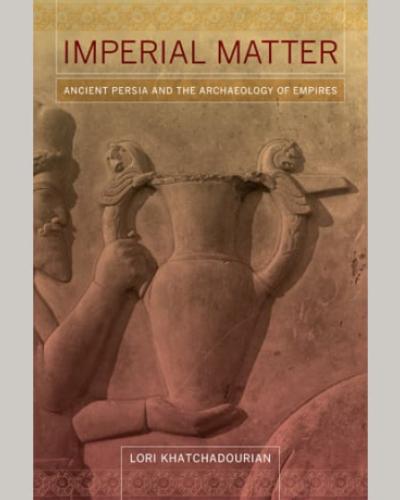
The Integrated Approach to Arabic Instruction
Leading teacher of Arabic, Munther Younes, explores the realities of teaching Arabic as a foreign language (AFL) and outlines his groundbreaking approach to instruction, tried and tested over many years at Cornell University.
The Integrated Approach to Arabic Instruction introduces teachers to the features of an integrated Arabic program—one that simultaneously teaches the two varieties of the language, Modern Standard Written Arabic, fuṣḥā, and the dialect, āmmiyya,in a way that reflects the authentic practice of native Arabic speakers. This pedagogy, Younes argues, is the most logical, effective and economical method of instruction as it prepares students fully for the realities of the Arabic diglossic situation.
Younes takes teachers through the following ground:
- Consideration of the current Arabic sociolinguistic situation and key debates in the field
- Outline of changing student goals and the needs of the modern AFL learner
- Overview of the Integrated Approach covering its rationale, features, implementation methods and usage of instructional materials in the classroom
- Response to objections to the Integrated Approach, outlining its advantages over alternative practices and clarifying crucial issues in practice
The Integrated Approach to Arabic Instruction addresses a pressing issue deeply relevant to the world of Arabic language instruction, placed in the practical context of shifting attitudes among students and educators. It will be an essential resource for all teachers of Arabic as a Foreign Language.
Routledge
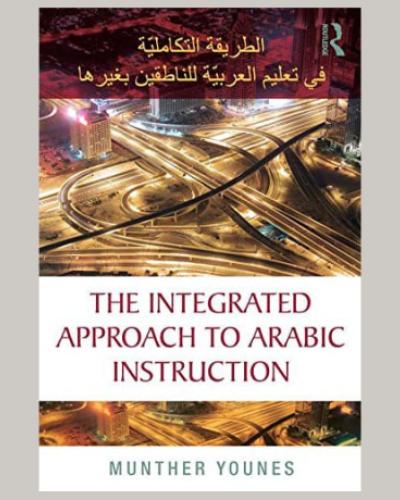
Shalom 3: A Comprehensive Course in Modern Hebrew
Shalom 3 is a comprehensive textbook, grammar and exercise book for Intermediate students in high school, and university students.
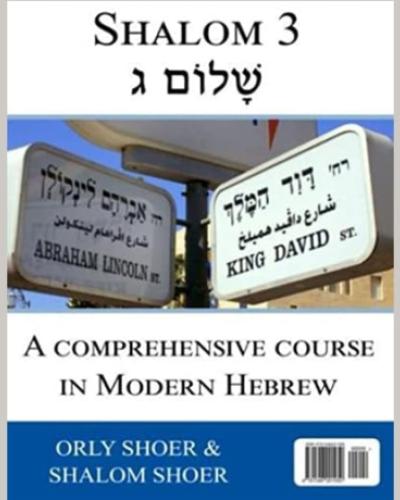
Shalom 2: A Comprehensive Course in Modern Hebrew
Shalom 2 is the second Hebrew book for beginners and is a part of comprehensive course in Modern Hebrew.
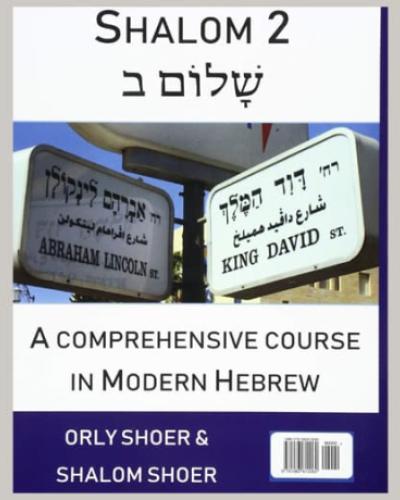
Shalom 1: A Beginners Comprehensive Course in Modern Hebrew
Shalom 1 is the first Hebrew book for beginners and is a part of comprehensive course in Modern Hebrew.
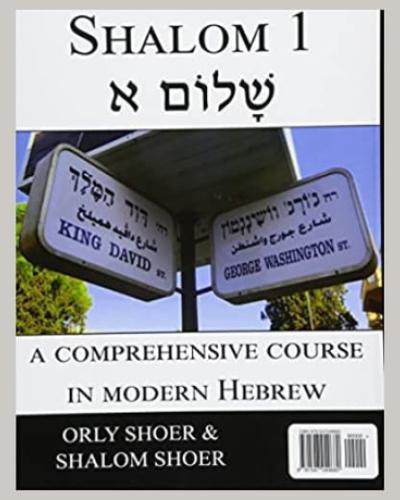
Kalila Wa Dimna: For Students of Arabic
Specifically designed for students of Arabic, this fully illustrated rendition of the Arabic literary classic enhances students’ reading, listening, speaking and writing skills through the medium of these fun, engaging and culturally relevant tales.
The tales are presented in simplified language providing learners of Modern Standard Arabic access to this masterpiece of Arabic prose.
In addition to the simplified versions, three tales are presented in Classical Arabic to give learners a feel for the original, while two tales are presented in both Classical and Modern Standard Arabic for comparison.
Each tale is fully supported by a range of comprehension, vocabulary-building, and grammar reinforcement activities and exercises.
An Arabic introduction outlines the historical context of the original Arabic text and its role in Arabic literature.
Approximately three hours of audio material, containing the texts read by native speakers, is available to download freely online to help develop the learner’s listening skills.
Suitable for both class use and independent study, Kalila wa Dimna: For Students of Arabic is a must for all intermediate to advanced students wishing to enhance their language skills and discover one of the most popular pieces of Arabic literature ever written.
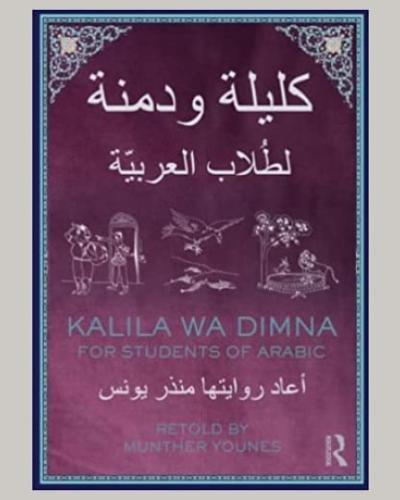
Arabiyyat al-Naas (Part Three): An Advanced Course in Arabic
Arabiyyat al-Naas (Part Three): An Advanced Course in Arabic builds further on the groundbreaking approach used in Part One and Part Two of the series. It integrates Modern Standard Arabic (MSA) and spoken Levantine in a way specially tailored to the needs of advanced students. Levantine Arabic strongly features in spoken discussions of MSA materials, reflecting authentic practice by native speakers. However, the overall ratio of MSA – the form employed for reading, writing and formal speaking in the Arab world – to Levantine has been increased, supporting students’ mounting need for MSA as they progress further in their education.
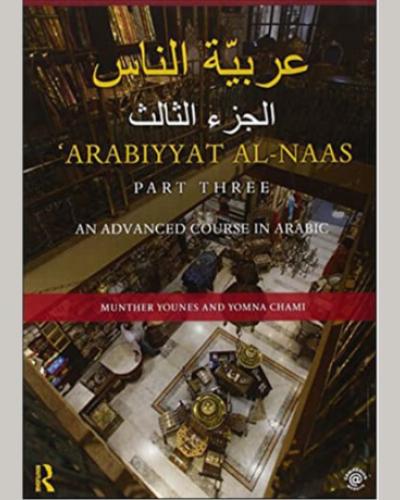
Arabiyyat al-Naas (Part Two)
Arabiyyat al Naas (Part Two): An Intermediate Course in Arabic offers a vibrant course in Arabic as it is written and spoken today by educated native speakers. Not only does it continue the innovative integration of Modern Standard Arabic (MSA) and Levantine Arabic used in Part One of the series, but it does so in a way that supports and develops students’ increased mastery of the language. Combining a greater focus on cultural topics with an increased coverage of MSA, Part Two introduces more sophisticated communication, giving students a deeper awareness of the cultural base of the Arabic language.
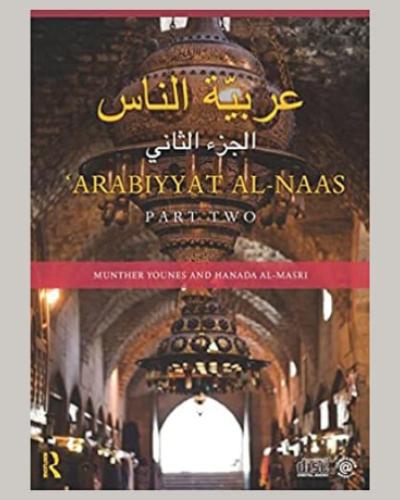
Arabiyyat al-Naas (Part One)
‘Arabiyyat al-Naas (Part One) offers a groundbreaking introduction to Arabic as it is written and spoken by native speakers. It combines a progressive and rigorous grounding in Modern Standard Arabic (MSA) – the form employed for reading, writing and formal speaking – with an innovative integration of the spoken Levantine variety used in everyday situations in Syria, Lebanon, Jordan and Palestine. Introducing the two simultaneously ‘Arabiyyat al Naas (Part One) uses each in its proper context: Levantine for conversations and MSA for reading and writing activities. In this way, the course efficiently prepares students for the practical realities of learning and "living" Arabic today.
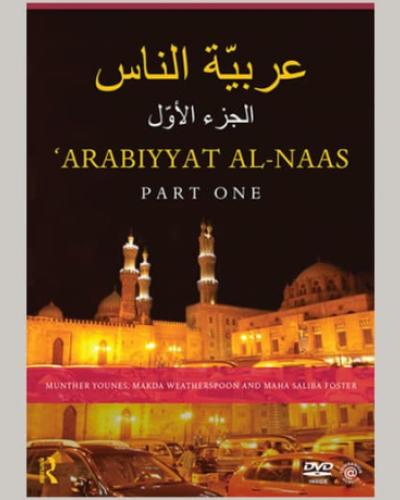
Cuneiform Texts Primarily from Iri-Sagrig/Al-Šarraki and the History of the Ur III Period
Seven years in the making, this publication restores a major section of the archives of the Sumerian city of Iri-Sagrig/Al-Šarraki during the Third Dynasty of Ur (ca. 2012 - 2004 B.C.E.). The volumes contain the transliterations of 1159 texts now scattered over 5 continents in public and private collections. They represent the archival records of the office of the governor of the city and add of a wide variety of texts, some types of which are entirely new, to the period. The texts provide significant new evidence on foreign relations with Elam, religion and cult, the Ur III royal family, the Ur III local economy and professions, and a new calendar. Volume 1 consists of an extensive overview of the archives by Owen supplemented by contributions by H. Brunke (rations), D. Frayne (history and geography), W. Heimpel (sesame cultivation), and G. Rubio and C. Woods (Sumerian grammar). Comprehensive indexes by Alexandra Kleinerman and extensive notes by Owen facilitate access to the extensive and often unique data in Volume 2. In addition, Owen, in Volume 1, provides an Excursus on the importance of publishing unprovenanced texts. A selection of copies and photos is provided in Volume 2. These volumes constitute a major addition to the evidence for the history and culture of the Third Dynasty of Ur and will be of interest to historians, anthropologists, archaeologists and Assyriologists.
Publisher: CDL Press- Consigned
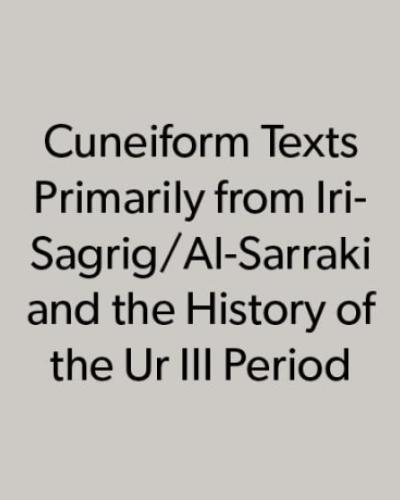
Zayd: the little-known story of Muhammad's adopted son
Although Muhammad had no natural sons who reached the age of maturity, Islamic sources report that he adopted a man named Zayd shortly before receiving his first revelation. This "son of Muhammad" was the Prophet's heir for the next fifteen or twenty years. He was the first adult male to become a Muslim and the only Muslim apart from Muhammad whose name is mentioned in the Qur'an. Eventually, Muhammad would repudiate Zayd as his son, abolish the institution of adoption, and send Zayd to certain death on a battlefield in southern Jordan. Curiously, Zayd has remained a marginal figure in both Islamic and Western scholarship. David S. Powers now attempts to restore Zayd to his rightful position at the center of the narrative of the Prophet Muhammad and the beginnings of Islam. To do so, he mines traces left behind in commentaries on the Qur'an, in biographical dictionaries, and in historical chronicles, reading these sources against analogues in the Hebrew Bible. Powers demonstrates that in the accounts preserved in these sources, Zayd's character is modeled on those of biblical figures such as Isaac, Ishmael, Joseph, and Uriah the Hittite. This modeling process was deployed by early Muslim storytellers to address two key issues, Powers contends: the bitter conflict over succession to Muhammad and the key theological doctrine of the finality of prophecy. Both Zayd's death on a battlefield and Muhammad's repudiation of his adopted son and heir were after-the-fact constructions driven by political and theological imperatives.
University of Pennsylvania Press
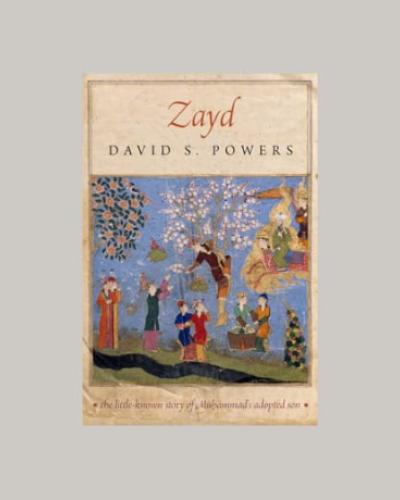
Jewish Families
From stories of biblical patriarchs and matriarchs and their children, through the Gospel’s Holy Family of Jesus, Mary, and Joseph, and to modern Jewish families in fiction, film, and everyday life, the family has been considered key to transmitting Jewish identity. Current discussions about the Jewish family’s supposed traditional character and its alleged contemporary crisis tend to assume that the dynamics of Jewish family life have remained constant from the days of Abraham and Sarah to those of Tevye and Golde in Fiddler on the Roof and on to Philip Roth’s Portnoy’s Complaint.
Jonathan Boyarin explores a wide range of scholarship in Jewish studies to argue instead that Jewish family forms and ideologies have varied greatly throughout the times and places where Jewish families have found themselves. He considers a range of family configurations from biblical times to the twenty-first century, including strictly Orthodox communities and new forms of family, including same-sex parents. The book shows the vast canvas of history and culture as well as the social pressures and strategies that have helped shape Jewish families, and suggests productive ways to think about possible futures for Jewish family forms.
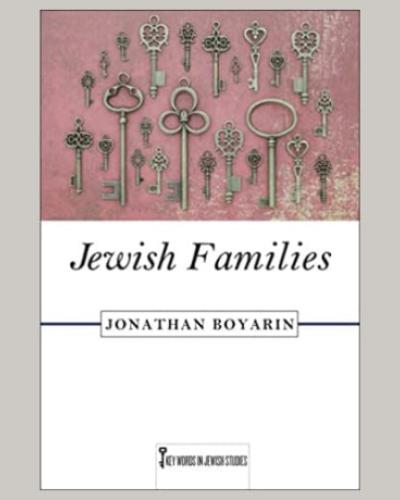
The Routledge Introduction to Qur'anic Arabic
The Routledge Introduction to Qur’ānic Arabic is an innovative, text-based, language course designed for students interested in acquiring a foundation in Qur’ānic and Classical Arabic.
Focused on enhancing comprehension and vocabulary acquisition, the book contains 40 lessons designed to be covered in about 40 hours of classroom instruction. Starting with the shorter sūras of the Qur’ān, such as al-Fatiha and those of the Juz’ ‘Amma, it utilizes their recurring vocabulary and grammatical structures to build a stable linguistic foundation for learners before moving on to more challenging and longer sūras such as Yāsīn, Maryam and Yūsuf.
Although the book is primarily designed for classroom use, the vocabulary and structures of the short sūras, the accompanying audio recordings, and the activities found throughout the book will also be helpful for independent learners. The only prerequisite is knowledge of the Arabic writing system.
The audio material, which is available on the Routledge website, helps learners improve their pronunciation of individual sounds and develop their skills to syllabify Arabic words and phrases correctly in order to approximate that of native speakers. Also available on the website are answer keys to exercises and transcriptions of the audio material.
Written by an experienced teacher, The Routledge Introduction to Qur’ānic Arabic is an essential guide for instructors, students and anyone interested in developing their knowledge of Qur’ānic Arabic.
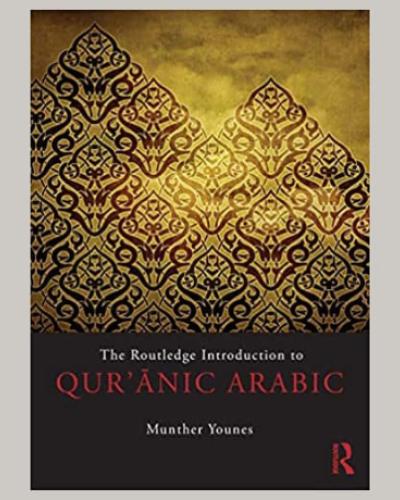
Garšana Studies
Essays on slavery, religion, foods, industries, natural resources, physicians, military matters, and language of a city in late third-millennium BC Sumer.
Published by CDL Press
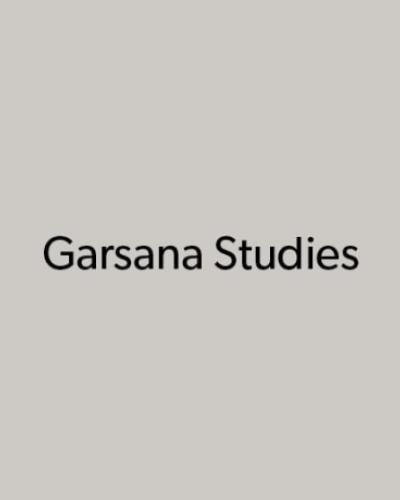
Mornings at the Stanton Street Shul: A Summer on the Lower East Side
In these pages Jonathan Boyarin invites us to share the intimate life of the Stanton Street Shul, one of the last remaining Jewish congregations on New York’s historic Lower East Side. This narrow building, wedged into a lot designed for an old-law tenement, is full of clamorous voices—the generations of the dead, who somehow contrive to make their presence known, and the newer generation, keeping the building and its memories alive and making themselves Jews in the process. Through the eyes of Boyarin, at once a member of the congregation and a bemused anthropologist, the book follows this congregation of “year-round Jews” through the course of a summer during which its future must once again be decided.
The Lower East Side, famous as the jumping off point for millions of Jewish and other immigrants to America, has recently become the hip playground of twenty-something immigrants to the city from elsewhere in America
and from abroad. Few imagine that Jewish life there has stubbornly continued through this history of decline and regeneration. Coming inside with Boyarin, we see the congregation’s life as a combination of quiet heroism, ironic humor, disputes for the sake of Heaven and perhaps otherwise, and—above all—the ongoing
search for ways to connect with Jewish ancestors while remaining true to oneself in the present.
Mornings at the Stanton Street Shul illustrates in poignant and humorous ways the changes in a historic neighborhood facing the challenges of gentrification. It offers readers with no prior knowledge of Judaism and synagogue life a portrait that is at once intimate and intelligible. Most important, perhaps, it shows the congregation’s members to be anything but a monochromatic set of uniform “believers” but rather a gathering of vibrant, imperfect, indisputably down-to-earth individuals coming together to make a community.
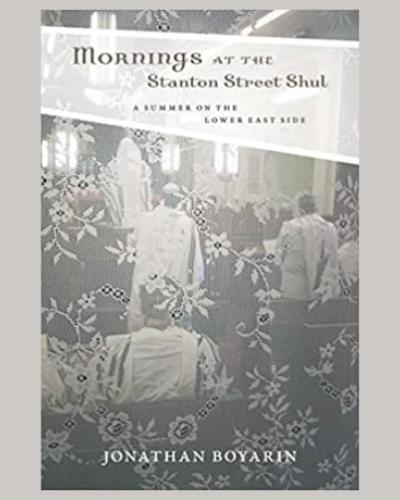
Josiah's Reform and the Dynamics of Defilement: Israelite Rites of Violence and the Making of a Biblical Text
Chapters 22 and 23 of 2 Kings tell the story of the religious reforms of the Judean King Josiah, who systematically destroyed the cult places and installations where his own people worshipped in order to purify Israelite religion and consolidate religious authority in the hands of the Jerusalem temple priests. Josiah's Reform and the Dynamics of Defilement is the first study to explicitly address the ritual dimensions of the text. Lauren A.S. Monroe argues that the use of cultic and ritual language in the account of the reform is key to understanding the history of the text's composition, and illuminates the essential, interrelated processes of textual growth and identity construction in ancient Israel.
By attending to the specific acts of defilement attributed to Josiah as they resonate within the larger framework of Israelite ritual, Monroe's work illuminates aspects of the text's language and fundamental interests that have their closest parallels in the priestly legal corpus known as the Holiness Code (Leviticus 17-26), as well as in other priestly texts that describe methods of eliminating contamination.
The priestly composition was then later reshaped in the hands of a post-Josianic, exilic or post-exilic Deuteronomistic historian who transformed his source material to suit his own ideological interests. The account of Josiah's reform is thus imprinted with the cultural and religious attitudes of two different sets of authors. Teasing these apart reveals a dialogue on sacred space, sanctified violence and the nature of Israelite religion that was formative in the development not only of 2 Kings 23, but more broadly of the historical books of the Bible.
Oxford University Press
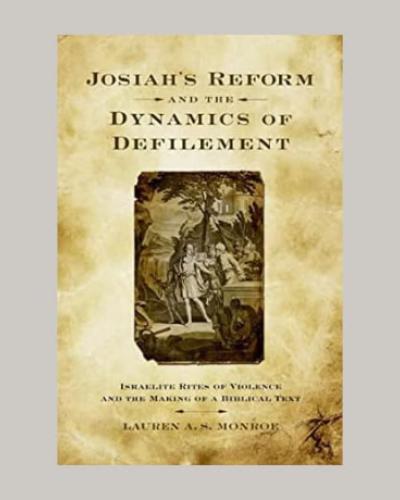
Ordinary Egyptians
The popular culture of pre-revolution Egypt did more than entertain—it created a nation. Songs, jokes, and satire, comedic sketches, plays, and poetry, all provided an opportunity for discussion and debate about national identity and an outlet for resistance to British and elite authority. This book examines how, from the 1870s until the eve of the 1919 revolution, popular media and culture provided ordinary Egyptians with a framework to construct and negotiate a modern national identity.
Ordinary Egyptians shifts the typical focus of study away from the intellectual elite to understand the rapid politicization of the growing literate middle classes and brings the semi-literate and illiterate urban masses more fully into the historical narrative. It introduces the concept of "media-capitalism," which expands the analysis of nationalism beyond print alone to incorporate audiovisual and performance media. It was through these various media that a collective camaraderie crossing class lines was formed and, as this book uncovers, an Egyptian national identity emerged.
Stanford University Press.

Mongrels or Marvels: The Levantine Writings of Jacqueline Shohet Kahanoff
The writings of Jacqueline Shohet Kahanoff (1917–1979) offer a refreshing reassessment of Arab-Jewish relations in the Middle East. A member of the bourgeois Jewish community in Cairo, Kahanoff grew up in a time of coexistence. She spent the years of World War II in New York City, where she launched her writing career with publications in prominent American journals. Kahanoff later settled in Israel, where she became a noted cultural and literary critic.
Mongrels or Marvels offers Kahanoff's most influential and engaging writings, selected from essays and works of fiction that anticipate contemporary concerns about cultural integration in immigrant societies. Confronted with the breakdown of cosmopolitan Egyptian society, and the stereotypes she encountered as a Jew from the Arab world, she developed a social model, Levantinism, that embraces the idea of a pluralist, multicultural society and counters the prevailing attitudes and identity politics in the Middle East with the possibility of mutual respect and acceptance.
Stanford University Press
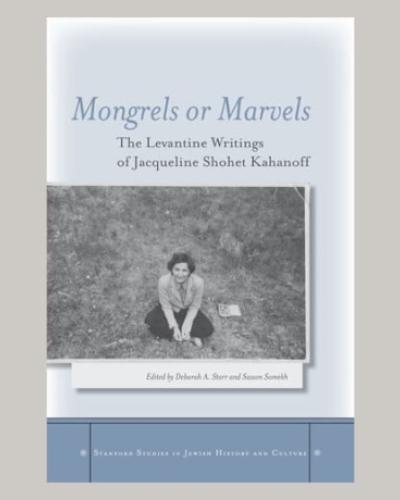
The Garshana Archives
by David I. Owen and Rudolf Mayr
The Garshana archives detail the administration of various aspects of a household associated with the royal estate of the general and physician Shu-Kabta and his wife, the princess Simat-Ishtaran.
This book discusses the history, personages, and economic functioning of the site, in addition to the transliteration of 1527 texts. Photographs of selected texts are included.
Published by CDL Press
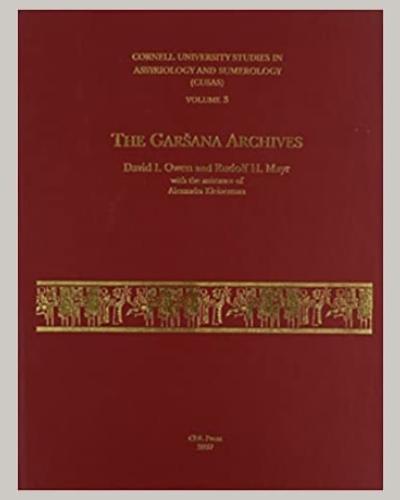
Power in the Portrayal: Representations of Jews and Muslims in Eleventh- and Twelfth-Century Islamic Spain
Power in the Portrayal unveils a fresh and vital perspective on power relations in eleventh- and twelfth-century Muslim Spain as reflected in historical and literary texts of the period.
Princeton University Press.
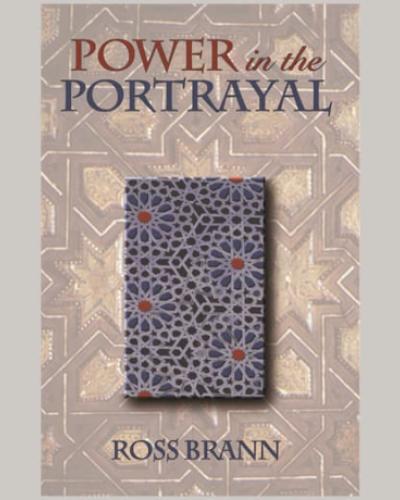
The Unconverted Self: Jews, Indians, and the Identity of Christian Europe
Europe’s formative encounter with its “others” is still widely assumed to have come with its discovery of the peoples of the New World. But, as Jonathan Boyarin argues, long before 1492 Christian Europe imagined itself in distinction to the Jewish difference within. The presence and image of Jews in Europe afforded the Christian majority a foil against which it could refine and maintain its own identity. In fundamental ways this experience, along with the ongoing contest between Christianity and Islam, shaped the rhetoric, attitudes, and policies of Christian colonizers in the New World.
The Unconverted Self proposes that questions of difference inside Christian Europe not only are inseparable from the painful legacy of colonialism but also reveal Christian domination to be a fragile construct. Boyarin compares the Christian efforts aimed toward European Jews and toward indigenous peoples of the New World, bringing into focus the intersection of colonial expansion with the Inquisition and adding significant nuance to the entire question of the colonial encounter.
Revealing the crucial tension between the Jews as “others within” and the Indians as “others without,” The Unconverted Self is a major reassessment of early modern European identity.
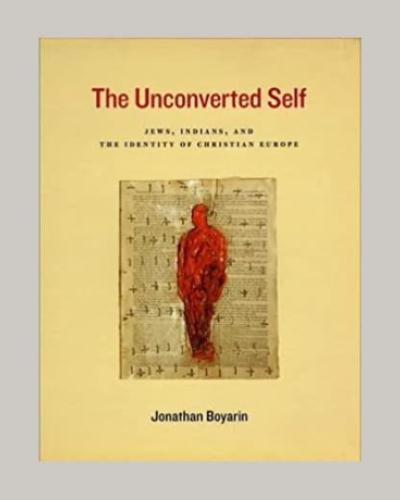
Analytical Concordance to the Garsana Archives
by Alexandra Kleinerman and David I. Owen
Provides translations and full contexts for the terminology in the Garshana documents and is an indispensable tool for anyone working on texts from third-millennium Mesopotamia.
This volume provides a comprehensive introduction to the contents of ca. 1500 texts associated with the royal estate of the general and physician Shu-Kabta and his wife, the princess Simat-Ishtaran. Extensive cross-referencing and organization by subject allow the reader to access the texts in ways hitherto impossible or time-consuming.
Published by CDL Press
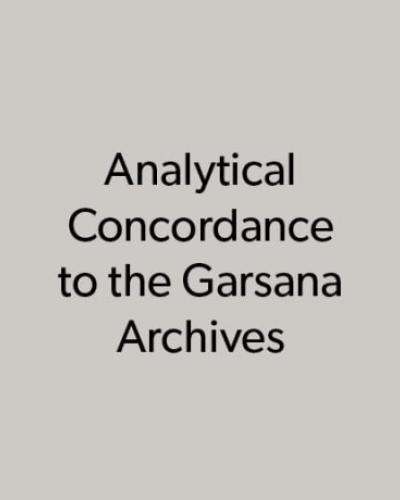
Scales of Fate: Trade, Tradition, and Transformation in the Eastern Mediterranean ca. 1350–1175 BCE
The aim is to clarify and problematize the socioeconomic roles of entrepreneurs (including merchants, traders, creditors, and financiers) in Late Bronze Age societies of the Eastern Mediterranean world. The region is bounded by kingdoms of the 14th to early 12th century BCE as represented in archives of clay tablets written in cuneiform and linear scripts. This encompasses an area stretching from the Aegean to Assyria and from Hatti to Egypt at a time of unprecedented sophistication in international relations. Monroe focuses on long-distance commerce in particular because it was, where trade is documented, the most lucrative and arguably most socioeconomically influential, form of exchange. By closely examining the practices and organization of entrepreneurs and their role in social and economic relationships, Monroe empirically and theoretically orients the analysis toward exchange relations. In broadest terms, this analysis reveals that professional traders constituted a highly dynamic, even destabilizing, force in society that was checked by more traditional institutions. Even as traditionalism balanced the entrepreneurial elements of society, trade activities brought about material and ideological changes that transformed culture and the lives of those living within it.
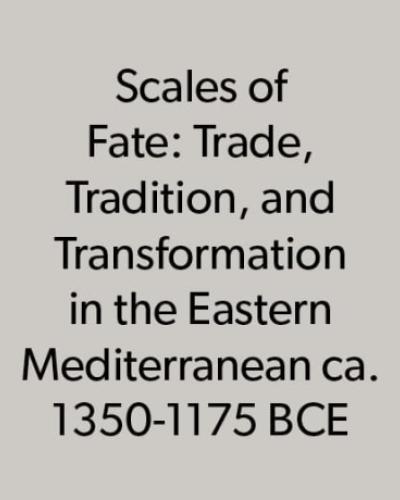
Law, Society, and Culture in the Maghrib, 1300-1500
David Powers analyzes the application of Islamic law through six cases which took place during the period 1300 to 1500 in the Maghrib. The source for these disputes are fatwas issued by the muftis, which Powers uses to situate each case in its historical context and to interpret the principles of law. He demonstrates that, contrary to popular stereotypes, muftis were dedicated to reasoned argument. The book represents a ground-breaking approach to a complex subject area for students and scholars.
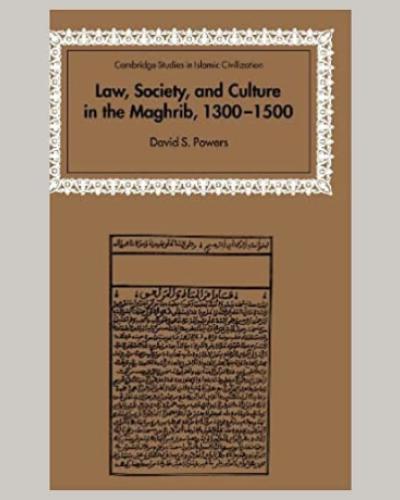
Jewishness and the Human Dimension
Jewishness and the Human Dimension is a leading scholar’s progress report on an effort to bring Jewishness broadly construed into dialogue with a wide range of thought in contemporary criticism, while linking those themes in turn to the question of planetary crisis.
Each chapter emerges from and addresses the circumstances of its composition; a talk to New Jersey undergraduates inviting them to contemplate their lifespans vis-à-vis the life history of the species; a meeting to contemplate Jewish memory outside Europe and after 1945; an inaugural address as the author sought to make sense of leaving his home on the Lower East Side and making a new one in Kansas. Two chapters on research and teaching in Jewish cultural studies as academic practice develop the notion of Jewish studies as a human science and examine how Jewish historiography, once a deeply conservative discipline, has integrated insights from anthropology and literary cultural studies. Boyarin also shares a dialogue with
the Jerusalem-based physicist Martin Land on physical and cultural ideas of futurity and redemption. The book ends with a stark challenge to those who work in the contemporary humanities and social sciences: in order to be able to contribute to the possibility of sustained human life on Earth, we need to interrogate rigorously now the status of human differences.
Neither ethnography (though it relishes the particular), memoir (though a personal voice is readily audible), nor criticism (though the work and figures of Jacques Derrida and especially Walter Benjamin are indispensable to its project), this book attempts to put in place words of the late Moishe Fogel, vice president of the Eighth Street Shul, that have long stood as a watchword for the author’s writing: “Everything what you know you gotta use!”
Fordham University Press
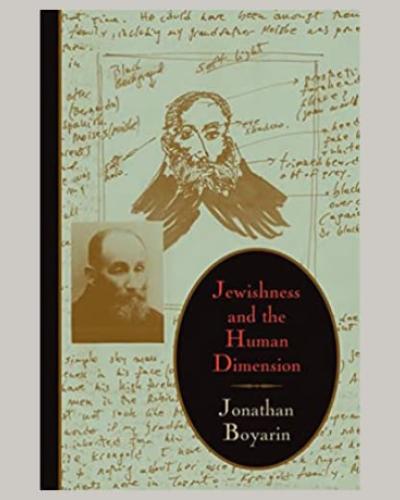
The Garshana Archives
by David I. Owen and Rudolf Mayr
The Garshana archives detail the administration of various aspects of a household associated with the royal estate of the general and physician Shu-Kabta and his wife, the princess Simat-Ishtaran.
This book discusses the history, personages, and economic functioning of the site, in addition to the transliteration of 1527 texts. Photographs of selected texts are included.
Published by CDL Press

Dispensing Justice in Islam
Dispensing Justice is designed to serve as a sourcebook of Islamic legal practice and qadi court records from the rise of Islam to modern times, drawing upon court records and qadi judgments, in addition to literary sources. In the first chapter, we survey the state of the field, sketching the history, structure, and modern transformation of the qadiship. The twenty chapters that follow are grouped thematically in four sections: (1) the nature and functions of the judgeship and its development over time; (2) the structure of the judicial apparatus; (3) the application of juristic thought and reasoning to specific cases in selected areas of the law; and (4) judicial procedure and the different forms of evidence. The volume fills a large gap in Islamic legal history.
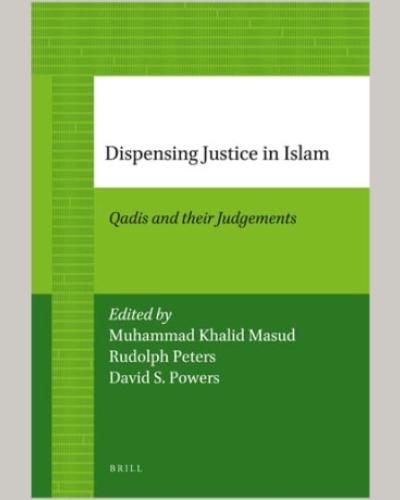
Renewing the Past, Reconfiguring Jewish Culture: From al-Andalus to the Haskalah
In a penetrating exploration of the various ways memories and representations of the Jewish past have been reconfigured in new historical circumstances, Renewing the Past, Reconfiguring Jewish Culture focuses on two key eras of encounter between Jews and non-Jews: the golden age of Sephardic culture in Islamic al-Andalus, on the one hand, and on the other, the period of the European Enlightenment and the Jewish Enlightenment, or Haskalah, which it inspired. The writings assembled here engage with key issues to understand how in both epochs the cultural orientation of Jewish society was profoundly reassessed and transformed by new influences filtering in from outside.
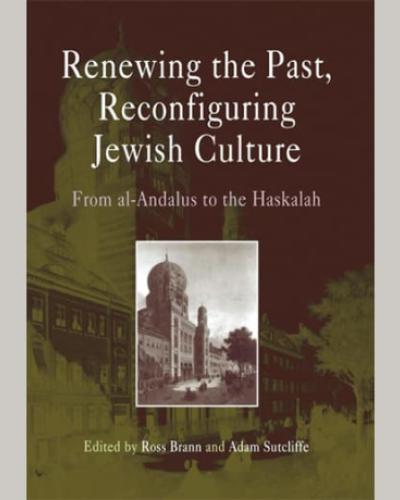
Guardians of Letters: Literacy, Power, and the Transmitters of Early Christian Literature
Who were the scribes that copied early Christian literature during the second and third centuries? What roles did they play in the reproduction and dissemination of these writings? To answer these questions, this study utilizes evidence from early Christian literature and the earliest Christian papyri--including their form, physical features, and textual characteristics.
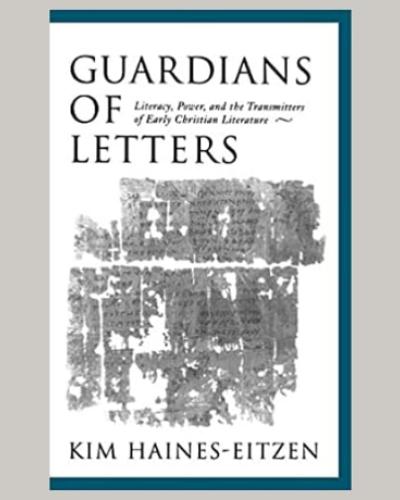
The Compunctious Poet: Cultural Ambiguity and Hebrew Poetry in Muslim Spain
Brann examines a major theme of Medieval Hebrew poetry: the unease of poets writing secular verse at odds with what they held sacred. He sees this unease as both a key to the literary history of the period and as an emblem of the particular form of cultural ambiguity unique to Andalusian Jewish society.
Publisher: Johns Hopkins University Press (Jewish Studies Series)
